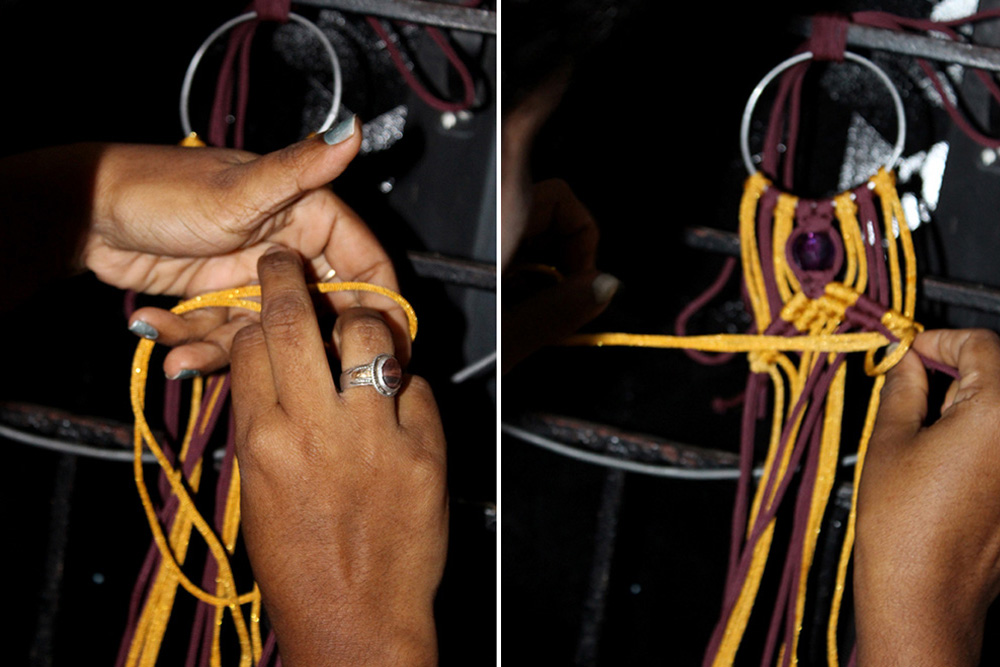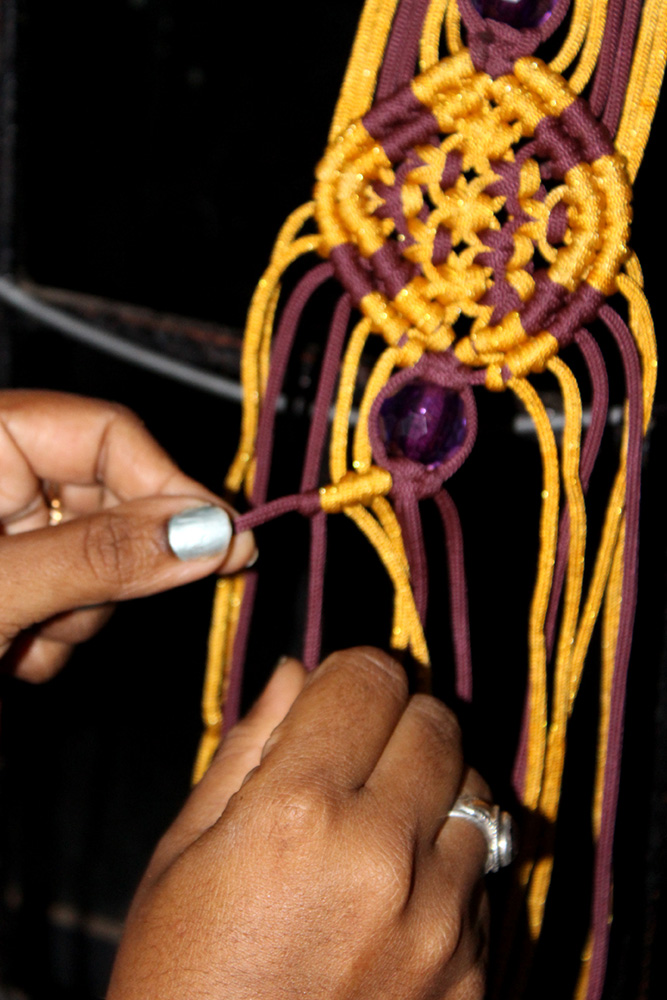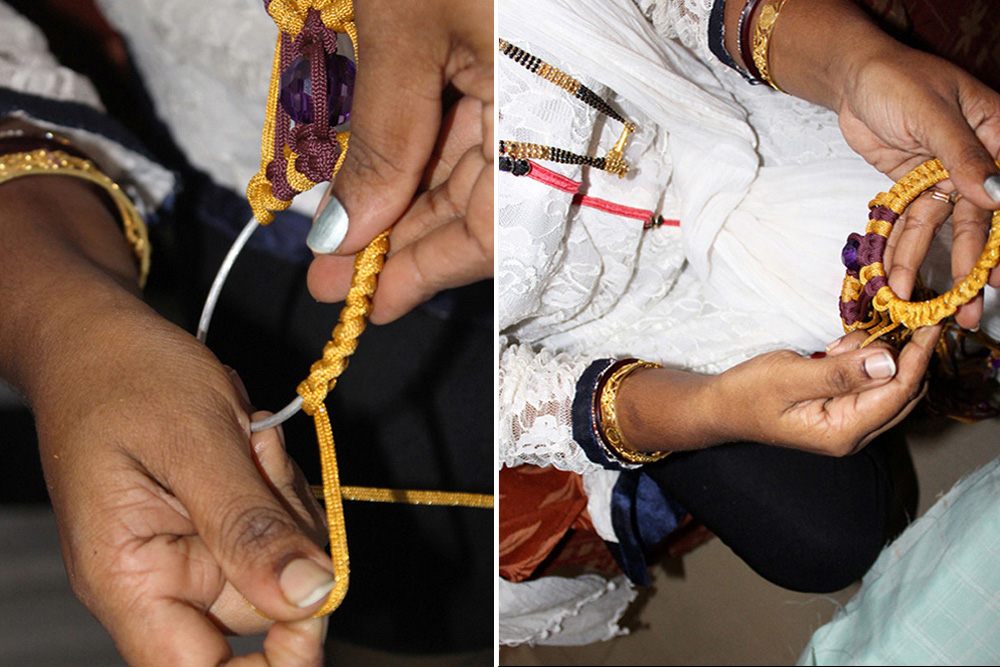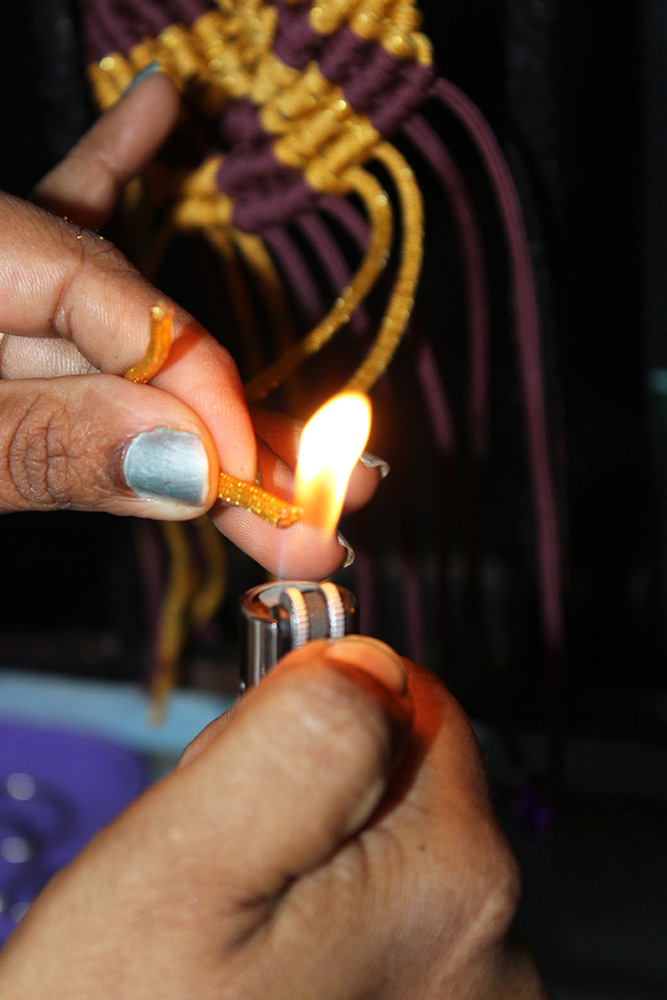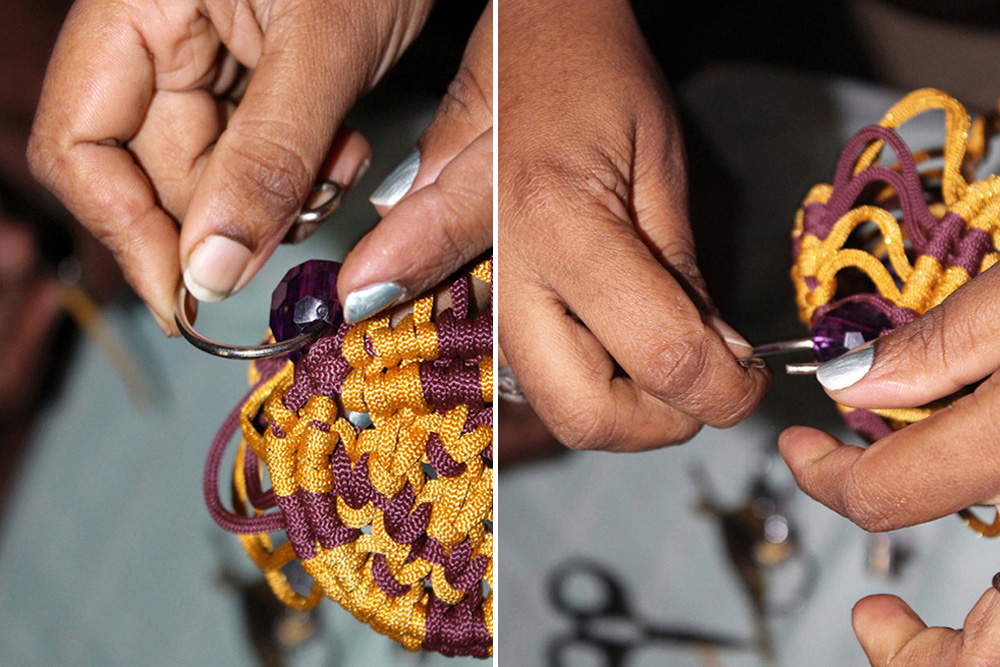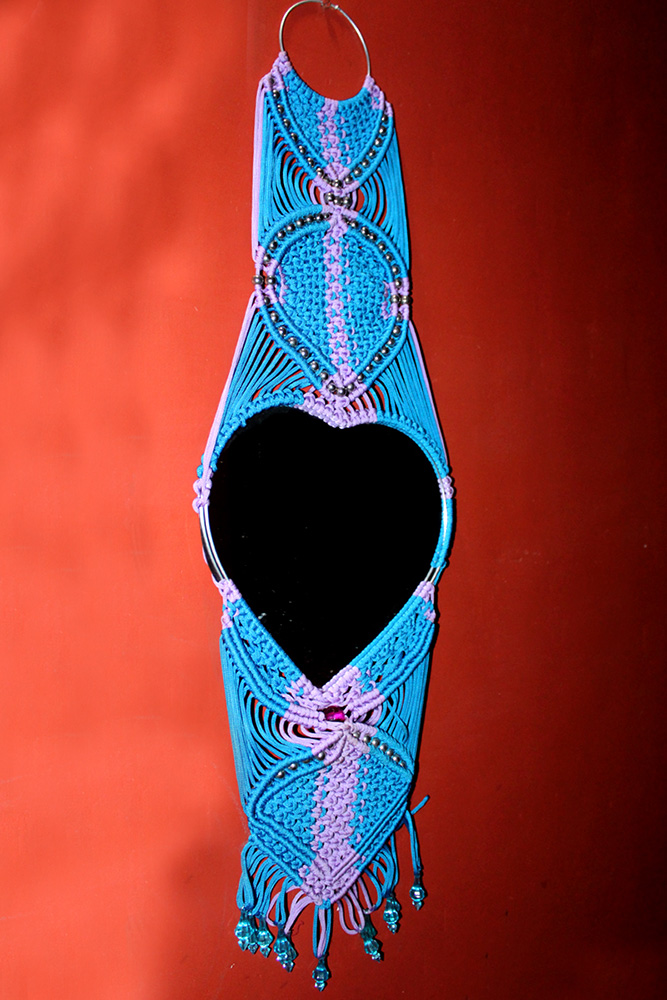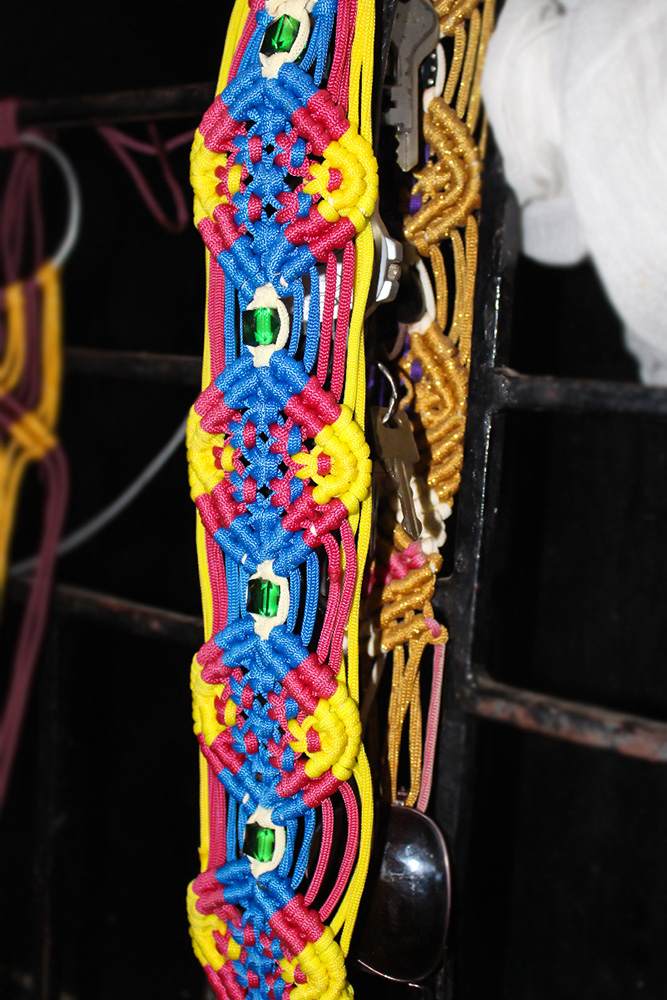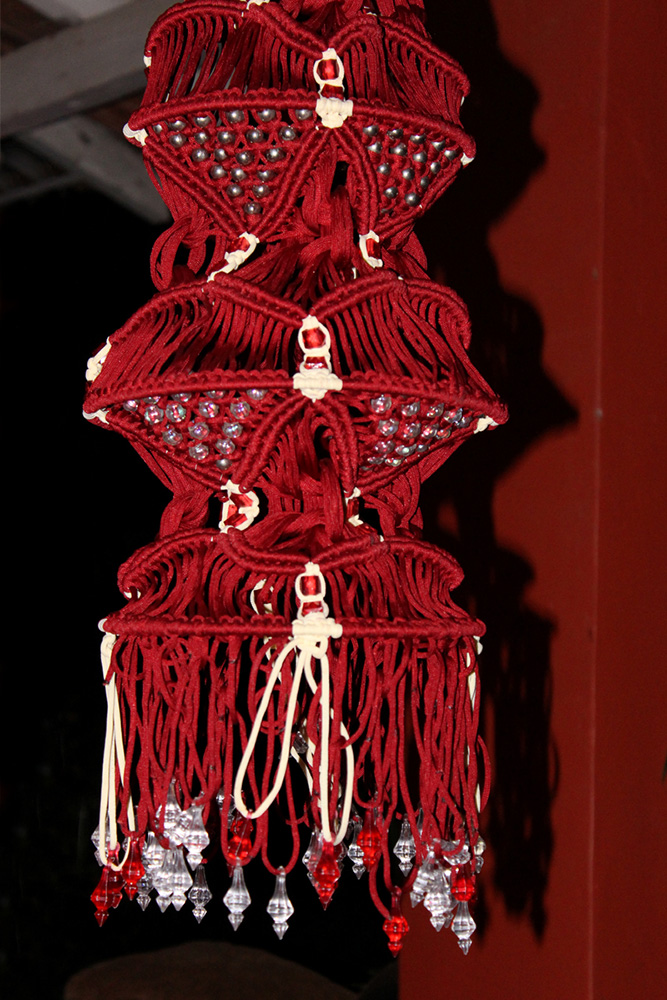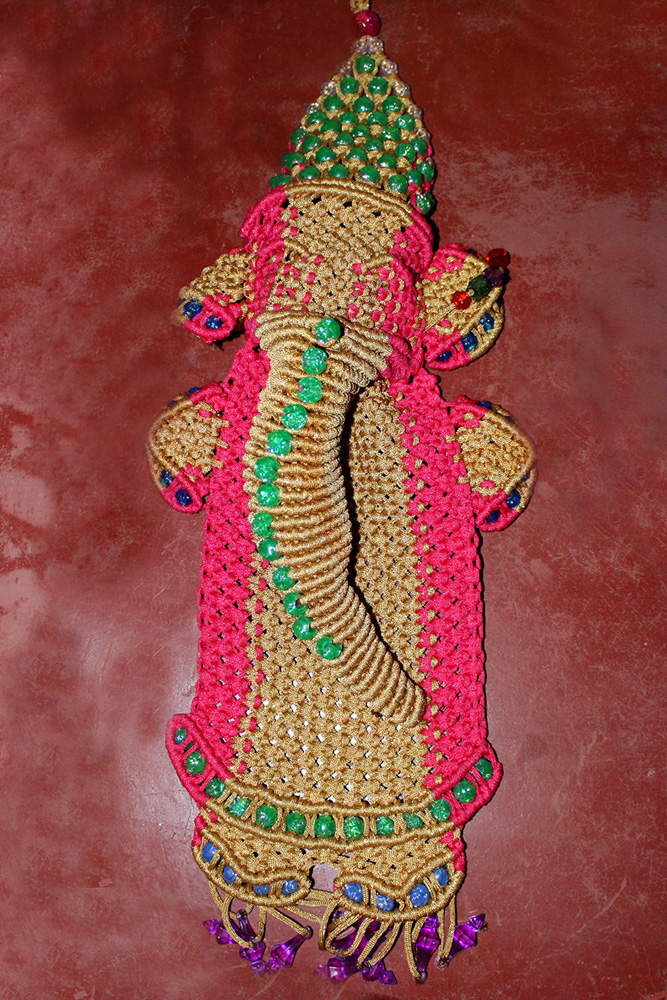Design Gallery
Macrame Art - Bardez, Goa
Vintage Knotting Technique
by
Macrame is a form of textile-making using knotting rather than weaving or knitting. The weavers knotted the excess thread and yarn along the edges of hand-loomed fabrics into decorative fringes on shawls, coverings, and bath towels. Macrame was most popular in the Victorian era. Most Victorian homes were adorned by this craft. Accessories like fabric belts, leather, and friendship bracelets are created using macrame techniques.
Apart from artifacts, home decoration and interior design became the new field for this unique craft. For macrame work, a knotting board is often used to mount the cords. Sometimes a C-clamp, straight pins, T-pins, U-pins, or upholstery pins used for holding cords in place. Beginners' kits, work boards, beads, and materials are available in craft stores for the hobbyist. One such hobbyist who became a professional artist is named Mrs. Sujal Vinod Parab from Bardez. She makes a variety of artifacts. Bardez is a region situated in the northern portion of the state of Goa, India.
For more details visit:
https://www.dsource.in/resource/macrame-art-bardez-goa












